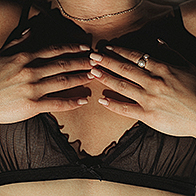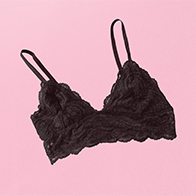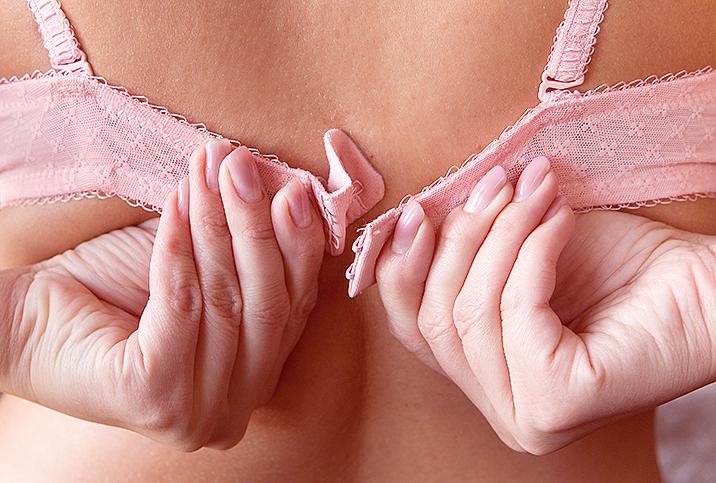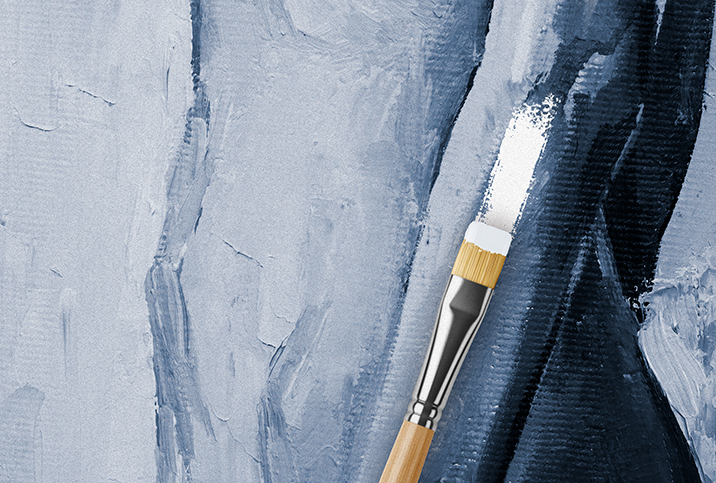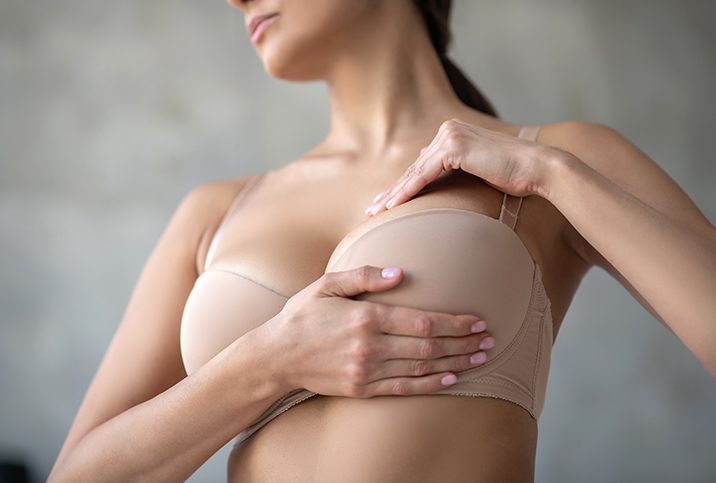Common Bra Myths You Probably Believe, Debunked
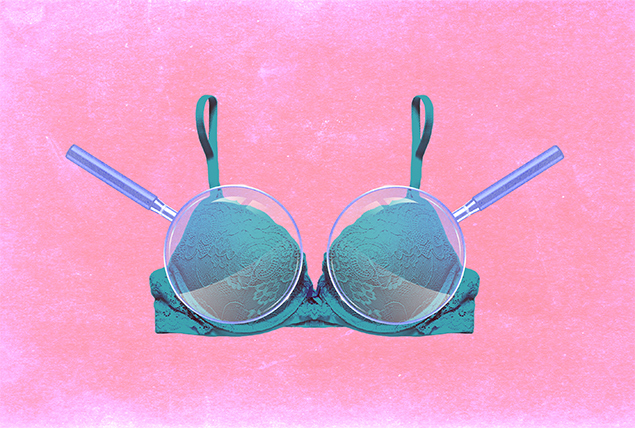
Is there a right way to wear a bra? Is wearing a bra to bed bad for you? These are just a few of the many bra questions and controversies that have emerged over the ages.
And we do mean ages: The first-ever bra likely dates back to ancient Greece when women tied bands of wool and linen around their chests.
The bra as we know it, short for brassière, or upper arm in French, was born in the early 20th century. It consisted of a chest band and two breast cups held in place by shoulder straps. By 1907, the bra starred in Vogue articles.
Fast-forward to the present day and the bra remains ubiquitous and oft-misunderstood. To help separate fact from fiction, experts have answered our burning bra-related questions.
Does not wearing a bra make your breasts sag?
It's a time-honored rumor: forgoing a bra will lead to breast sagging, also known as "breast ptosis." The pervasive belief isn't supported by science, according to Heather Richardson, M.D., a breast cancer surgeon at The Bedford Breast Center in Los Angeles.
"We haven’t been able to prove that wearing a bra either prevents sagging or that going braless strengthens breast tissue," Richardson said.
One of the few studies that investigated the benefits of long-term bra use—a 15-year study from France—found wearing a bra did not reduce ptosis.
"Medically, physiologically, anatomically, the breast does not benefit from being deprived of gravity," Jean-Denis Rouillon, study author and sports medicine specialist, told France Info.
Breast sagging occurs naturally over time—but it's caused by changes in your body as you age, as well as your breast's density, size and skin elasticity. Other factors shown to contribute to sagging breasts include pregnancies, a higher body mass index (BMI) and frequent smoking.
Is wearing a bra to bed bad for you?
Not according to Richardson, who says whether you wear a bra to sleep is a matter of personal preference.
There's no scientific evidence that sleeping with a bra causes problems. People with bigger breasts may benefit from wearing a bra to bed, as it can help restrict breast movement, according to bra retailer Third Love.
People who chose to wear a bra to bed should opt for a sleeping bra without wires or hardware, according to Jené Luciani Sena, a bra expert and author of "The Bra Book."
"Anything with wires can dig in and cause discomfort," Sena said.
The hook or clasp of your bra band could scratch you, and underwire bras or ill-fitting bra straps may feel less comfortable. If wearing a bra to bed causes skin irritation, choose a sleeping bra or go without.
Can bras reduce back pain?
This one depends on a few factors. A bra can provide relief for neck and back pain, according to Richardson, but it can vary based on the wearer's build and the severity of their condition.
Women looking for a bra that can help alleviate back pain should opt for one with snug bands and lightweight, supportive bra cups. They can take some of the breasts' weight off the shoulder straps.
Breast owners with back pain may also want to consider a posture-correcting bra. Limited research has suggested it could help improve back, neck and shoulder pain.
Can wearing a bra cause breast cancer?
Breast cancer will affect 1 in 8 women born today, according to the National Cancer Institute, but it's not due to wearing a bra. The answer to this one is a hard 'no,' according to Richardson. Bra-wearing won't cause cancer. It doesn't matter if it's an underwire bra or something else.
Despite online rumors that bras cause breast cancer by blocking lymph fluid flow, there is no scientific or clinical basis for this common myth, according to the American Cancer Society.
A 2014 study indicated that no aspect of bra wearing—cup size, underwire, average number of hours worn or age someone first began regularly wearing a bra—was associated with increased breast cancer risk.
Do sports bras contain BPA?
A 2022 report released by the Center for Environmental Health (CEH) revealed high levels of bisphenol A (BPA) in sports bras and activewear shirts from at least half a dozen popular brands. BPA is a hormone-disrupting chemical that some studies suggest is linked to male and female infertility, early puberty and breast cancer.
"Studies have shown that BPA can be absorbed through skin and end up in the bloodstream after handling receipt paper for seconds or a few minutes at a time," said Kaya Allan Sugerman, Illegal Toxic Threats Program Director at CEH, in the press release. "Sports bras and athletic shirts are worn for hours at a time, and you are meant to sweat in them, so it is concerning to be finding such high levels of BPA in our clothing."
CEH has asked brands to reformulate their products—some of which expose wearers to up to 22 times the safe maximum level of BPA based on standards set in California—to remove all bisphenols, including BPA.
"In the interim, we recommend limiting the time you spend in your activewear by changing after your workout," CEH told CNN.
To reduce your risk of BPA exposure, the CEH also recommends choosing a sports bra made of natural fibers such as cotton over polyester and spandex.
Is it true most women wear bras that don't fit?
"What exactly is a good fit?" Richardson asked. "It’s a bit subjective."
How do you know if you wear a bra properly?
Bra size can vary by style and brand, so finding a supportive and comfortable bra fit comes down to trial and error, according to Sena. Instead of relying on sizing as a set-in-stone number, she recommends using it as a guideline as you try on different bras.
"Knowing the signs of proper fit and paying attention to what feels good and what doesn’t will help [you find the right fit]," she said.
If it's a tight bra that causes breast pain, it's time for a new bra. If you have a smaller or bigger breast size, the shape of your boob and your preferred style factor into the type of bra that works best for you.
Signs of a properly fitting bra, according to Sena, include the following:
- The breast tissue isn't billowing out of the cups.
- The bra band is horizontal across your back, not riding up.
- The straps aren't digging in or sliding down.
- The bridge between the bra cups lies flat against your rib cage.
Does your bra size change?
Yes. Your breast growth can change.
"It's a common myth that women wear the same bra size throughout their life," Sena said.
Women's breasts change with age due to fluctuations in hormones and body weight. In addition, strength training, pregnancy and breastfeeding, and menopause can also affect your bra size.
Even breast implants can lose a little of their saline from evaporation over time, causing a slight decrease in size, according to Plastic Surgery Vegas.
The bra size you were wearing in high school may not be the same size or style you need when you are in your 40. Try different styles to see what feels right to you.
Is there a right way to wear a bra?
There is a way to properly wear a bra—and many people are doing it wrong, according to Richardson.
"Many women put their bras so their breasts touch the top of the abdomen skin with the bra sitting on top," Richardson said. "This can trap moisture and increase the risk of fungal infection that appears as a red rash. Make sure the bra sits underneath the breast and touches the skin at the underwire area."
To put on a bra correctly, Sena recommended the following steps:
- Bend over at the waist so all your breast tissue falls forward.
- Put your bra on over your shoulders and stand up
- Clasp it behind the back and then swoop each breast towards the center of the cups.
- Adjust the straps if you haven’t already.
Do red bras disappear under white t-shirts?
"Yes and no," Sena said.
We know that a white bra won't hide. So how does a red bra disappear under a white shirt? The color itself acts as a nude since blood-filled humans have warm, reddish undertones in our skin. However, whether the color of a red bra is concealed depends on the weight of the outer garment's fabric.
"If it’s a very thin gauze, for example, you might see it," Sena said. "The best course of action is to wear a cami underneath or find a nude bra that’s as close to your skin tone as possible."
Also, being able to see the outline of the bra has nothing to do with the color, she added.
The bottom line
The real purpose of a bra is to help shape and support your breasts. Wearing the wrong bra size isn't doing your girls any favors. Your breast size and shape may change over time. Try out different sizes and styles to see what works for you.







